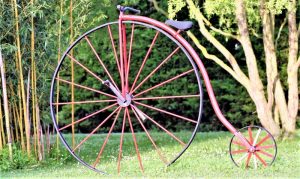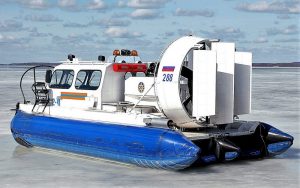Velocipede
The velocipede is a term used to describe a human-propelled land vehicle with two or more wheels which is synonymous with the word bicycle in the early history of those travel devices. However, although the word "velocipede" was used primarily to describe balanced bicycle designs that had pedals, the earliest appearance of the velocipede world was closely connected with devices known as Dandy horses, draisienne or hobby that were originally invented as the German Baron Karl Drais. Dandy bikes had a very simple design in which users were propelled by manually stretching their legs to the ground, where they could walk, run and then rest their legs while the force propelled a simple bicycle forward.

Interesting information
- Type of vehicle: human-propelled land vehicle
- Inventor: Karl Drais
- Year: 1817
What's a velocipede?
The velocipede is a term used to refer to any terrestrial vehicle that is driven by man and that has one or more wheels that help him to drive and move from one place to another.
What is a velocipede for?
Velocipedes serve primarily as a means of entertainment. They are used in greater numbers by children who are in the process of learning to ride a bicycle and by older adults who need physical exercise but are unable to ride a two-wheeled bicycle. They can also be adapted for people who have special needs.
Characteristics of the velocipede
The main characteristics of the velocipede are as follows:
- It had the characteristics of ordinary bicycles.
- The front wheel of the velocipede was three times larger than the rear wheel.
- Its pedals were fixed to the front wheel.
- It was also known as the bone agitator because people who used it took a long time to move it.
- Its Latin name means fast feet.
- It was invented by the German Karl Drais in 1817.
- It had an easel that had two or three wheels.
- It was mobilized by means of a pair of pedals that were moved by the people who mounted the velocipede.
- Although it was formally known as velocipede, the press named it Draisiana after its inventor.
History
To start, at the beginning of its history, we must mention the French Count Mede de Sivrac, who in 1790 invented the “celeriferous “, which was a machine to move that had two wheels lined up by a bar, did not have a crank and the person mounted on it by pushing with the feet.
In 1817, a German nobleman added a direction to the front wheel to make it turn so that the person would maintain balance. In England they were called “Dandy Horse,” which was a lighter vehicle with an adjustable seat and elbow support. This vehicle became very popular among the upper classes of France and Germany.
Innovations appeared little by little and thanks to the Scottish blacksmith, Kirkpatrick Macmillan, pedals and steering levers emerged. These innovations made it possible to propel oneself with one’s feet without having to touch the ground. The mechanism consisted of short pedals attached to the rear wheel hub and connected by long lever bars. The feet were in charge of the up and down movements.
In France, carriage builder Pierre Michaux attached axles and pedals to the front wheel of his “Dandy horse” and it was then that he named it velocipede. Since the pedals and axles were connected to the front wheel, the bigger the wheel, the faster it could go. Michaux is seen as the forerunner of the bicycle.
In the 1970s, the velocipede had become a tall bicycle. James Starley, an English inventor, produced the first machine with almost all the characteristics of the high wheel bicycle, although, it lacked stability in the wheel.
In 1885, John Kemp Starley created the “safety bicycle“, using a smaller front wheel which, through bearings, was propelled by a chain, brakes were adjusted for greater safety. In 1888, John Dunlop developed tires that were filled with air to cushion most shocks.
Parts
The parts of the velocipede were as follows:
- Driving levers
- Pedals that allowed the machine to be driven
- Rear wheel and front wheel that were fixed by a hub and connected by long lever bars.
- Connecting rods attached to the levers.
How a velocipede works?
The driving levers and pedals were the main parts that were added to the velocipede. These innovations allowed people to propel the machine with their feet without having to touch the ground. The drive mechanism consisted of short pedals that were attached to the rear wheel hub and connected by means of long lever bars, which were fitted to the frame at the top of the machine. These connecting rods were attached to the levers at almost a third of their length from the pedals. The machine was propelled by the feet pushing down and forward.
How to cite this article?
Briceño V., Gabriela. (2019). Velocipede. Recovered on 23 February, 2024, de Euston96: https://www.euston96.com/en/velocipede/









